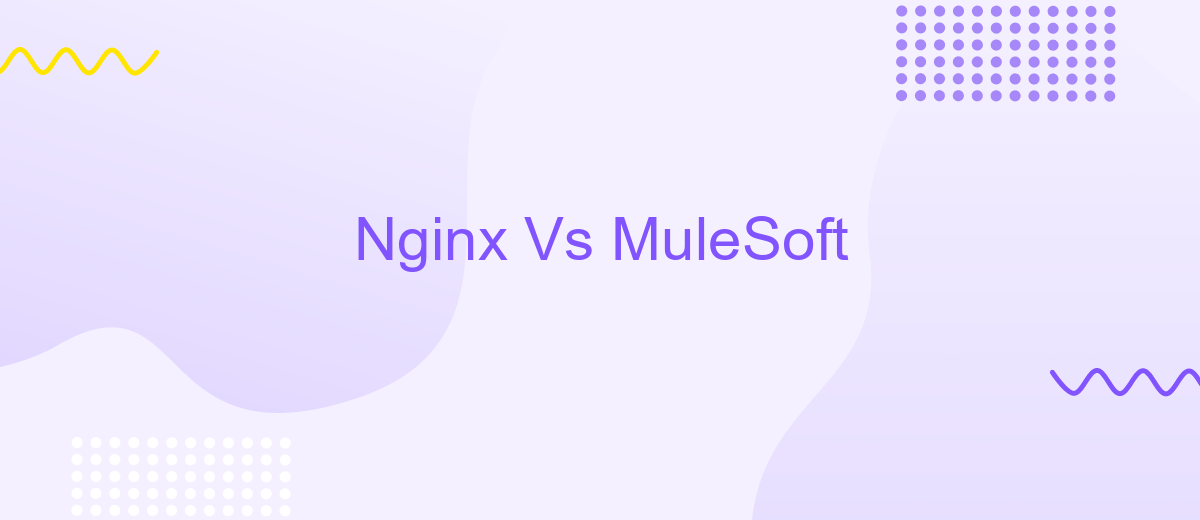Nginx Vs MuleSoft
In the ever-evolving landscape of web technologies and integration platforms, choosing the right tool for your needs can be challenging. This article delves into a comparative analysis of Nginx, a high-performance web server and reverse proxy, and MuleSoft, a robust integration platform for connecting applications, data, and devices. Understanding their strengths and use cases will help you make an informed decision.
Introduction
When it comes to choosing a platform for managing your web servers and APIs, two prominent names often come up: Nginx and MuleSoft. Both offer robust solutions for different use cases, making the decision between them crucial for your business needs. Nginx is widely known for its high-performance HTTP server capabilities, while MuleSoft is a comprehensive integration platform that facilitates seamless API management.
- Nginx: Primarily a web server, reverse proxy, and load balancer.
- MuleSoft: An integration platform for connecting applications, data, and devices.
Understanding the core functionalities and differences between Nginx and MuleSoft can help in making an informed decision. For instance, if your primary need is to manage web traffic efficiently, Nginx might be the better choice. On the other hand, if your focus is on integrating various services and managing APIs, MuleSoft offers a more suitable solution. Additionally, tools like ApiX-Drive can further streamline these integrations, making the process even more efficient and user-friendly.
Features: Nginx vs MuleSoft

Nginx is a high-performance web server and reverse proxy server renowned for its speed and ability to handle many concurrent connections. It excels in load balancing, caching, and serving static content efficiently. Nginx's lightweight architecture and asynchronous processing make it a preferred choice for high-traffic websites and applications. Additionally, it offers robust security features, including SSL/TLS support and DDoS mitigation, ensuring the safe and reliable delivery of web content.
MuleSoft, on the other hand, is an integration platform focused on connecting applications, data, and devices. It provides a comprehensive suite of tools for designing, building, and managing APIs and integrations. MuleSoft's Anypoint Platform facilitates seamless connectivity between various systems, enabling businesses to create integrated networks effortlessly. For organizations looking for a user-friendly solution to manage integrations, services like ApiX-Drive can be invaluable. ApiX-Drive simplifies the process of connecting different applications and automating workflows, making it easier for businesses to leverage the full potential of their digital ecosystems.
Strengths of Nginx

Nginx is a highly efficient web server that excels in handling a multitude of concurrent connections. Its lightweight architecture ensures minimal memory usage, making it an ideal choice for high-traffic websites and applications. Nginx's ability to serve static content quickly and efficiently further enhances its performance.
- High Performance: Nginx can handle a large number of simultaneous connections with low resource consumption.
- Scalability: It supports load balancing and reverse proxying, which allows for seamless scaling of web applications.
- Security: Nginx offers robust security features, including SSL/TLS support and advanced access controls.
- Flexibility: It is highly configurable and can be customized to meet specific needs through modules and third-party extensions.
- Ease of Use: Nginx's straightforward configuration syntax and comprehensive documentation make it user-friendly for both beginners and experts.
For businesses looking to integrate multiple services and automate workflows, Nginx can be paired with tools like ApiX-Drive. This integration platform simplifies the process of connecting Nginx with other applications, ensuring smooth data flow and enhanced operational efficiency. By leveraging ApiX-Drive, organizations can optimize their web infrastructure and streamline their digital operations.
Strengths of MuleSoft

MuleSoft stands out due to its robust capabilities in connecting applications, data, and devices. It is designed to simplify the integration process, making it accessible for businesses of all sizes. With its Anypoint Platform, MuleSoft offers a unified solution for API management and integration, ensuring seamless connectivity across various systems.
One of the key strengths of MuleSoft is its ability to handle complex integration scenarios with ease. It provides a comprehensive set of tools and services that streamline the development and management of APIs and integrations. This enables organizations to accelerate their digital transformation efforts and improve operational efficiency.
- Comprehensive API management
- Scalable integration solutions
- User-friendly interface for designing and managing integrations
- Extensive support for various protocols and data formats
- Robust security features
Additionally, MuleSoft's integration capabilities are complemented by services like ApiX-Drive, which further simplify the process of connecting different applications and automating workflows. By leveraging such tools, businesses can achieve greater agility and responsiveness in their operations, ultimately driving better business outcomes.
Conclusion
In conclusion, both Nginx and MuleSoft offer robust solutions for different needs within the realm of web server management and integration platforms. Nginx excels in high-performance web serving, reverse proxying, and load balancing, making it an ideal choice for handling heavy web traffic and ensuring seamless user experiences. Its lightweight architecture and efficient resource management make it a go-to for many enterprises aiming for scalability and speed.
On the other hand, MuleSoft stands out with its comprehensive integration capabilities, enabling businesses to connect disparate systems and streamline workflows. With tools like ApiX-Drive, organizations can further enhance their integration processes, automating data transfers and ensuring real-time synchronization between various applications. Ultimately, the choice between Nginx and MuleSoft depends on your specific requirements: whether you need a powerful web server or a versatile integration platform. Both tools can significantly enhance your IT infrastructure when used appropriately.
- Automate the work of an online store or landing
- Empower through integration
- Don't spend money on programmers and integrators
- Save time by automating routine tasks
FAQ
What are the primary differences between Nginx and MuleSoft?
Can Nginx and MuleSoft be used together?
Which platform is better for API management?
Is there a way to automate and integrate services without using MuleSoft?
What is the learning curve like for Nginx compared to MuleSoft?
Routine tasks take a lot of time from employees? Do they burn out, do not have enough working day for the main duties and important things? Do you understand that the only way out of this situation in modern realities is automation? Try Apix-Drive for free and make sure that the online connector in 5 minutes of setting up integration will remove a significant part of the routine from your life and free up time for you and your employees.


